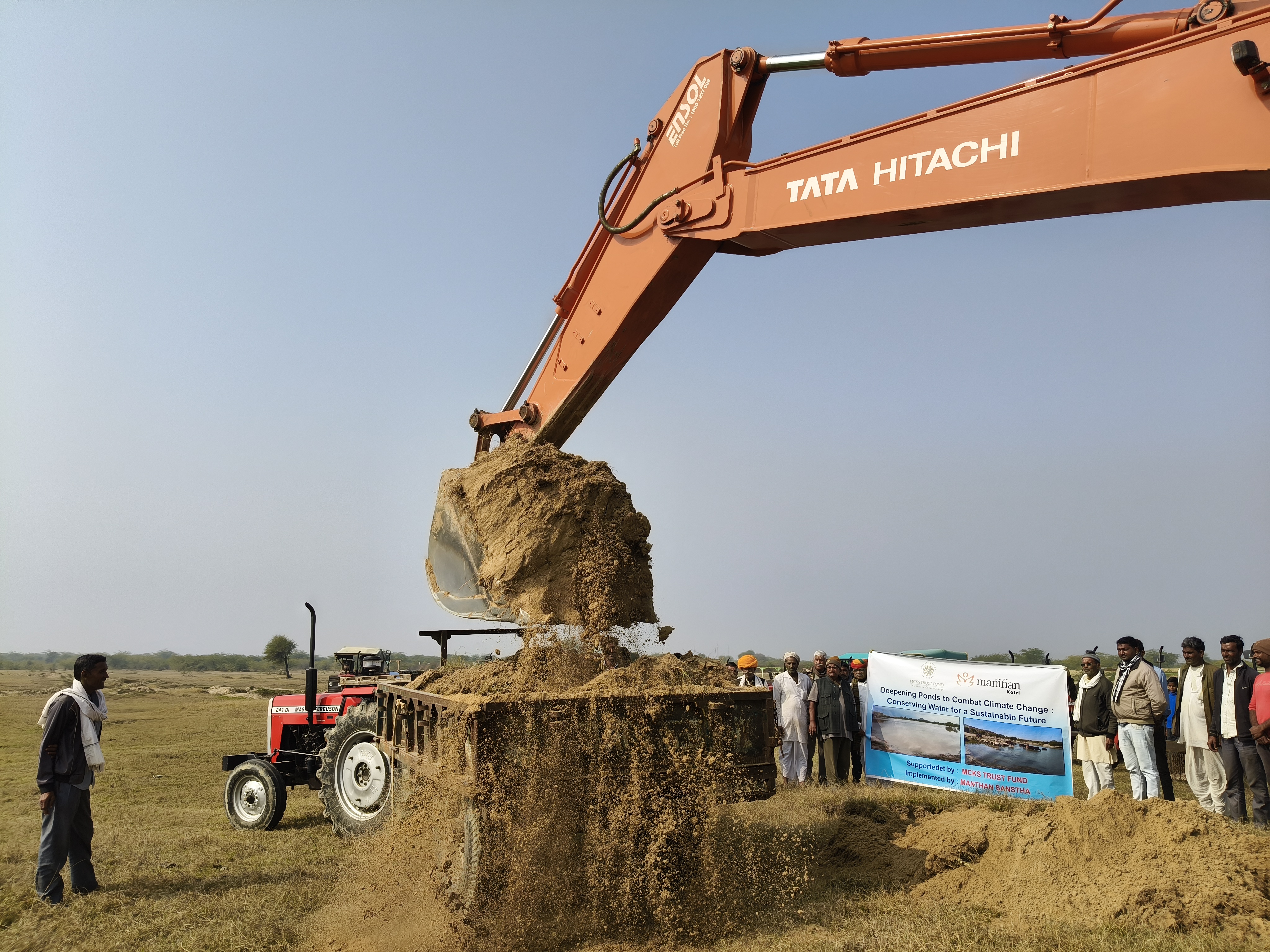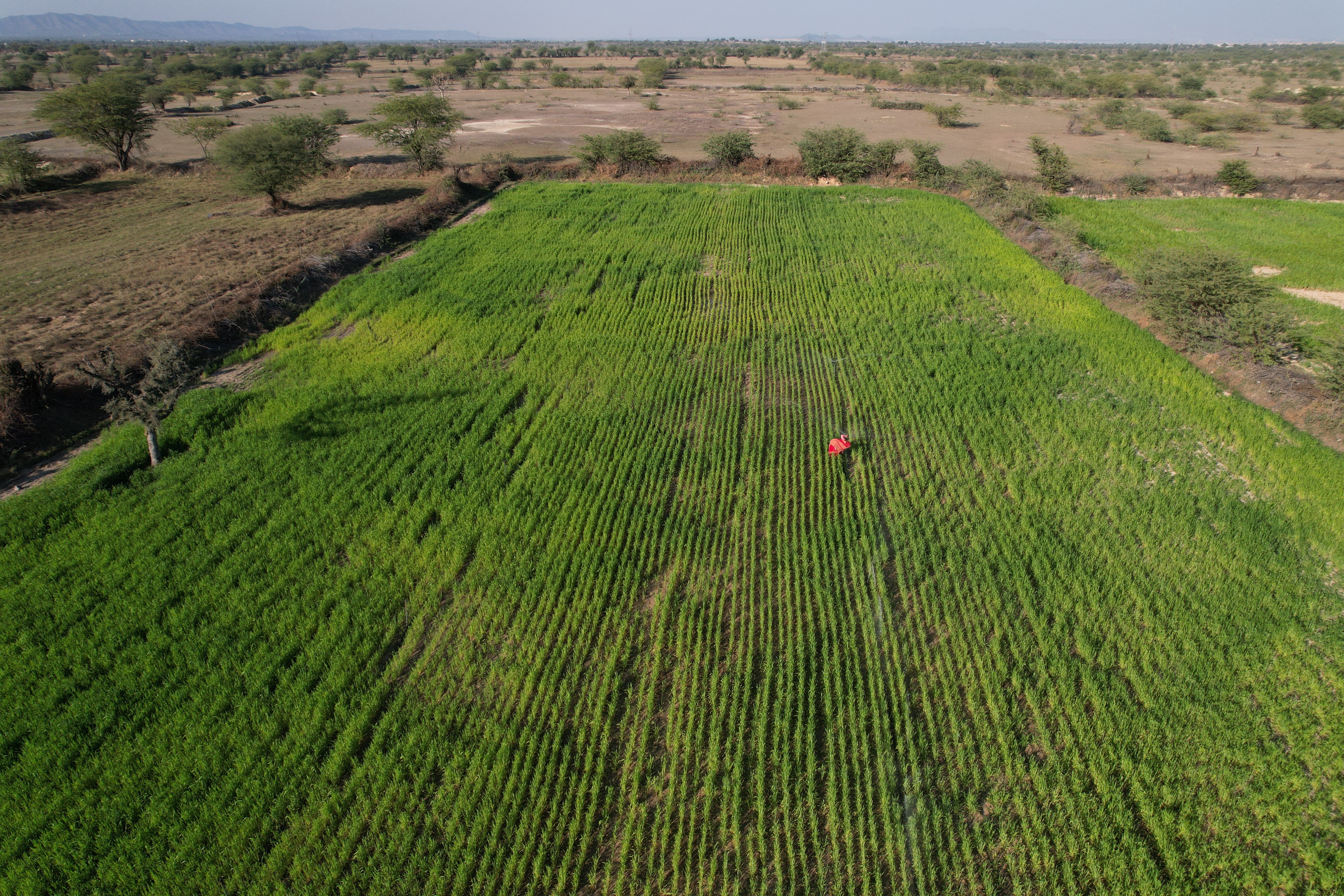
In the heart of Nosal village, Kishangarh Tehsil in Ajmer district, where the arid land meets the struggles of its people, a beacon of hope has emerged—the excavation of Gau Sagar Talab. This crucial project, initiated on January 19, 2025, is a game-changer for the community, tackling long-standing water scarcity issues and paving the way for sustainable development. Spearheaded by local efforts and generously supported by the MCKS Trust Fund, this initiative is set to reshape the region’s ecosystem, agricultural prospects, and overall quality of life.
A Mission for Water Security
For generations, the people of Nosal have battled against the harsh realities of living in a saline desert. With groundwater too brackish for drinking or irrigation, the community faced dire consequences—declining livestock, withering vegetation, migration in search of better opportunities, and an unrelenting burden on women and children who spent hours fetching water.
The excavation of Gau Sagar Talab is more than just a restoration project—it’s a lifeline. By enhancing the pond’s water storage capacity, this initiative aims to revitalize agriculture, support local wildlife, and offer much-needed relief to the village’s hardworking residents.
The Herculean Effort Behind the Project
Over an intensive 11-day period, 33 tractors and an LNT machine worked tirelessly to excavate 6,434 trolleys of soil—equivalent to a staggering 643,400 cubic feet. The result? A significantly expanded water reservoir, capable of storing an additional 1.77 crore liters of rainwater. This breakthrough guaranteees long-term water security, bringing renewed hope and prosperity to Nosal Village.
 Excavation of the Gau Sagar Talab in Nosal
Excavation of the Gau Sagar Talab in Nosal
Why Was the Excavation Necessary?
Nosal’s geographic and climatic conditions made this intervention imperative. The consequences of prolonged water scarcity included:
- Decline in Livestock and Vegetation: The lack of grazing land led to a drastic reduction in livestock farming, affecting livelihoods and food security.
- Migration and Educational Disruptions: With little access to water and agricultural prospects dwindling, many families were forced to migrate, causing interruptions in children’s education.
- Climate Change Impacts: Rising temperatures and erratic rainfall patterns exacerbated the existing crisis, making the village even more vulnerable to droughts.
- Burden on Women and Girls: Hours spent fetching water took a toll on the health, education, and well-being of women and girls, limiting their opportunities for personal and professional growth.

The Far-Reaching Impact of the Project
This project goes beyond immediate relief—it lays the foundation for long-term environmental and social change. The restored pond will provide:
- Water Security for Agriculture and Livestock: Reliable access to water will enable farmers to cultivate crops, vegetables, and fodder, revitalizing dairy production and strengthening the local economy.
- Wildlife and Biodiversity Conservation: The pond will serve as a crucial water source for migratory birds and wild animals, fostering a healthier and more diverse ecosystem.
- Reduction in Migration and Improved Livelihoods: With access to water, families can remain in the village, reducing displacement and fostering economic stability.
- Enhanced Education and Social Welfare: Less migration means children can consistently attend school, while women and girls will have more time to focus on education, health, and personal development.
The successful excavation of Gau Sagar Talab is a testament to the power of collective action and community-driven solutions. This initiative not only sets a precedent for sustainable water management but also contributes to the global fight against climate change.
